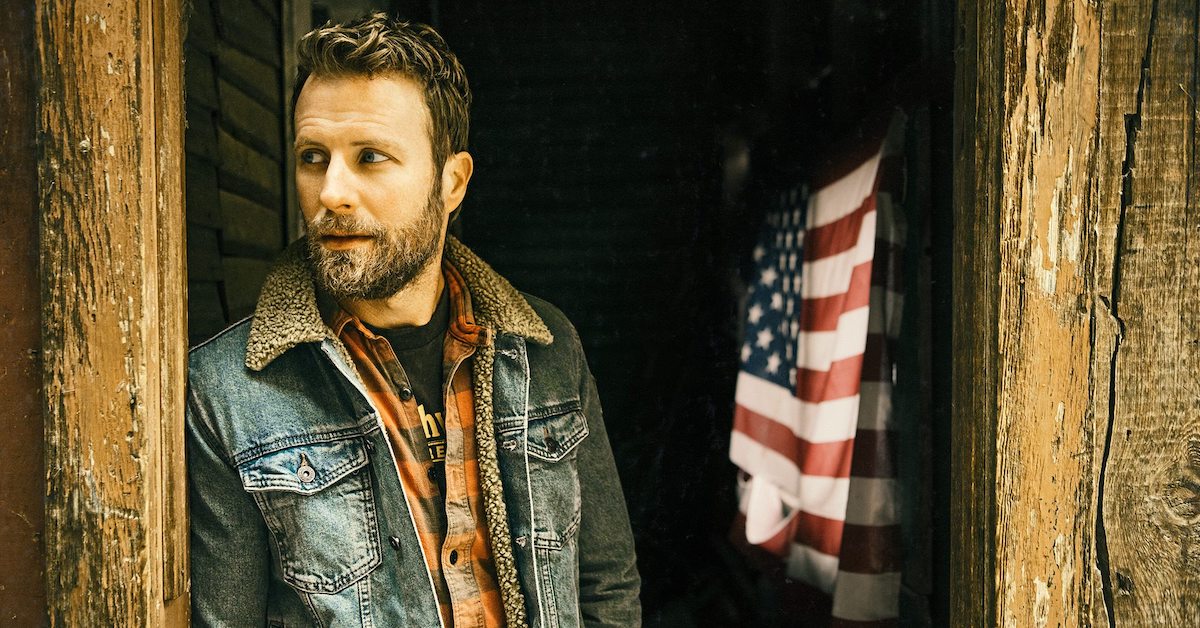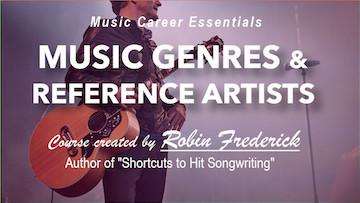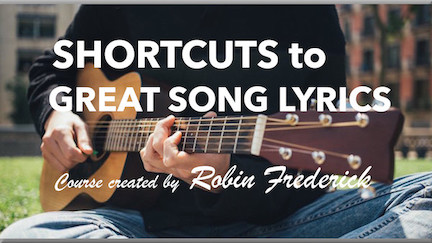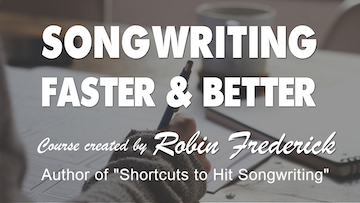“Say You Do” recorded by Dierks Bentley definitely plays fast and loose with a few songwriting rules. In spite of that (or because of it), Dierks Bentley made it to #1 on the Country airplay charts and stayed for a fair amount of time. Even though the melody and lyrics of this song have a decidedly unique slant, it still appeals to radio’s demanding listeners. So if you’re just dying to be a song crafting rebel, check out how these writers did it.
“Say You Do” – Dierks Bentley
Writers: Trevor Rosen / Shane McAnally / Matthew Ramsey
TECHNIQUES TO HEAR AND TRY:
Answer the listener’s questions.
Create contrast between sections with melodic rhythm.
Use a tight rhyme scheme and still sound natural.
Read the lyrics here: Say You Do – Dierks Bentley
Watch on YouTube
GENRE/STYLE
The song’s genre is Contemporary Country. The melody has loads of forward momentum, a characteristic of the current Country sound. The production has all the hallmarks of Country hit radio with plenty of dynamic ups and downs, and a strong launch into the choruses. There’s plenty of detail in the lyric but the Pop influence is certainly present; the focus is on an emotional moment rather than a story line. We’ll be going deeper into all of these elements as we take an in-depth look at this song.
SONG STRUCTURE
This is a stripped-down, streamlined structure. There’s no pre-chorus, just a straight line from verse to chorus. Here’s what it looks like:
VERSE / CHORUS
VERSE / CHORUS
INSTRUMENTAL BRIDGE
VERSE / CHORUS / TAG
VERSES: The verses consist of two sets of three lines. The first verse opens with “Don’t worry about the damage done…” The second verse starts with “Baby, I’m begging you to lead me on….”
CHORUS: The chorus starts with “Well, couldn’t you / Say you do…”
INSTRUMENTAL BRIDGE: This song uses an instrumental bridge. It’s short and moves quickly on to the third verse. It exists solely to give listeners a short break. If a song moves back and forth between verse and chorus for a third time without any break it may start to feel too predictable, like it’s stuck in a rut. Going to a bridge can break that pattern, surprising the listener, and allowing the song to return to a verse without that “see-saw” feeling.
INTRODUCTION: Notice how quickly this track gets to the vocal (11 seconds). It’s all about introducing the singer and the situation. That’s why listeners are here; don’t make them wait too long for it. Use your introduction to set the mood – in this case, intimate and acoustic – then cut to the chase.
TAG: A tag is a section at the end of a song where a line or two, usually the title or hook line, is repeated. It often has a big, anthemic feel to it, giving the listener an extra emotional boost as the song ends. This tag (at 2:56) consists of the title “Say You Do” repeated by the background singers while Bentley riffs a bit on the central idea of the song. It’s a memorable way to end a song, leaving the listener with a final emotional tug that will stay with them.
– Try It Now –
Watch the video or listen to the song and notice where each song section begins. Identify verses, choruses, bridge, and tag. Think about writing a song with this structure. What would you write about?
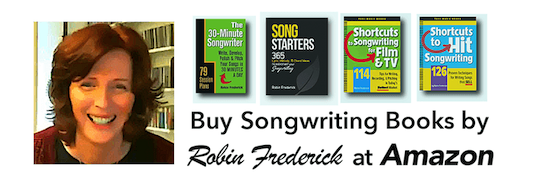
LYRICS
OPENING LINES: Notice how the opening lines drop the listener right into the middle of an intriguing situation.
Don’t worry about the damage done
Just let the words roll off your tongue
Even if you’re lying
The singer doesn’t start by telling us what led up to this moment, how they met, or what caused this problem. He pulls us straight into a single, intense situation – I call it a “peak moment.”
Choosing the most emotionally intense moment in a situation and starting your song there guarantees a strong opening and plenty of listener interest. Then add details as needed to draw the listener further into the scene. You can hear this technique in many hit songs, like Hello by Adele and We Don’t Talk Anymore by Charlie Puth.
ANSWER THE LISTENER’S QUESTIONS: Of course, opening lines like these immediately raise questions. Why is the singer willing to risk being hurt and listen to lies? The song has to address these questions, or begin to do so, as soon as possible or listeners will get frustrated. They want answers! It’s like reading a headline on The National Enquirer while you stand in line at the market. You’ve just got to pick it up and read it ’cause you really want to know!
The song gets to the chorus quickly and that’s where the answers are:
Mess me up
Get in my head
Steal my t-shirt
Wreck my bed
All night long
Like you used to.
In these lines, we get a glimpse of the intimacy that once fueled this relationship. And while it’s clear she no longer cares for him, he still wants her. Got it. And not once did this lyric say “You don’t love me any more.”
RAISE THE STAKES: How many times have you wondered what to write in your second verse? This lyric handles that problem nicely and demonstrates a cool song craft trick: Raise the stakes. Whatever you said in your first verse, make it bigger in your second verse. If the first verse suggests the singer is willing to listen to lies, make it an open invitation in the second verse: “I’m begging you to lead me on,” “…take your lies, and lay ’em on me.”
In your second verse, make the things the singer is willing to do, the love he has, the fears he will face, whatever it is, make it greater than in the first verse. It’s an effective way to build intensity in the lyric as your production builds.
RHYME SCHEME: The more I listen to this song, the more impressed I am. On top of answering questions and raising the stakes, these writers gave themselves an insanely tight rhyme scheme in both the verse and chorus sections.
We all know how hard it is to maintain a conversational tone, natural word order, say what you need to say, and follow a tight rhyme scheme all at the same time. This lyric flows naturally and sounds simple but I’ll bet it was a beast to write.
No matter what genre you’re writing in, never twist lines out of shape or say something you don’t mean just to complete a rhyme. Either rewrite the rhyming lines until they sound natural or change your rhyme scheme.
Rhyming can add emphasis to a line, it can add to the overall satisfying quality of a song, but it can never take the place of words that sound real and authentic. This song is a great example of rhymes that work hard in a lyric that sounds natural and honest.
– Try It Now –
Work up an opening verse lyric that puts the listener in the middle of a peak emotional moment. Then write a chorus lyric that answers the questions that listeners are likely to have. If you’re feeling ambitious, write a second verse that raises the stakes, intensifying what the singer is willing to do.
MELODY
There’s something very interesting going on in this melody. We usually put a song’s chorus in a higher note range than the verse. It adds energy and urgency to the chorus. But in this song, the chorus is in the same note range as the verse. In other words, the most common high and low notes of the melody (the “note range”) are pretty much the same in the verse and the chorus. To the listener’s ear, it sounds like the chorus didn’t travel up or down.
The chords that accompany the verse and chorus are also the same – just two chords rocking back and forth with one minor chord at the end of the verse. So, how does this song create contrast between sections, delivering a clear, memorable chorus?
Listen to the verse now and notice the lengths of the phrases, then listen to the chorus and see if you can hear the difference. Just looking at the lyrics will give you a good clue. Here’s the verse again:
Don’t worry about the damage done
Just let the words roll off your tongue
Even if you’re lying
Now, here are a few lines from the chorus:
Well couldn’t you
Say you do
Say you might
For tonight
Have a heart
Bend the truth
Even if you don’t
Couldn’t you?
The chorus phrases are short and follow each other in repetitive, rhythmical phrases. The rhythm of the melody is what gives the chorus it’s extra push. It rolls forward with the power of a freight train. With few pauses for breath, the momentum is unstoppable. A little added syncopation keeps it interesting.
And notice how conversational the chorus melody sounds, almost as if the singer is speaking the lines. Yet the insistent urgency of the rhythm gives the lines an unsettling, yearning, emotional tug.
This type of repetitive, short-phrase melody is often used in pre-choruses to increase anticipation before releasing the energy in a big chorus melody. Here the writers chose to play with that particular song craft technique to create something surprisingly different but still effective. By lifting the melody up in the second half of the chorus, they gave it more of a chorus-style build, then resolved it just as a typical chorus would.
– Try It Now –
There are more interesting things going on in this melody beyond what I’ve mentioned here. Check out the phrasing of the lyrics and melody by singing along with the track until you feel comfortable. Notice how some of the chorus lines add a couple extra words, or emphasize an unexpected syllable so things don’t get too predictable, and how the phrases start on weak beats (Beat 2 and 4) and end on strong beats (Beat 1 and 3).
To embed these techniques, learn to play and sing this song and practice it until the phrasing feels comfortable. This is basically a two-chord song, with one extra chord at the end of the verse. It’s easy to play so it’s a good song to learn if you’re just getting started on piano or guitar.
You’ll find the chords with lyrics here in the key of C. If you want to play along with the recording in Eb, put your capo on the 3rd fret or transpose your keyboard up three half steps (+3).
PRODUCTION
A fingerpicked acoustic guitar in “Say You Do” anchors this song, with a second, higher part coming in at the choruses providing a nice lift. Overall, I’m reminded of some of Fleetwood Mac’s big hits of the late ’70s and early ’80s. It’s a sound that still has huge appeal and it’s been adopted by the Country/Pop genre. It works well for this song, but might be too polished for other, more edgy or aggressive songs. When choosing your approach to production, make sure you underscore the character of the lyric and singer. Production should always reflect the character of the artist and the song.
TEMPO & GROOVE: This is a great example of an arrangement that adds a lot of motion and energy to a song with a slow tempo. There are different ways of thinking about Beats Per Minute (or tempo). In this case, I’d set the metronome at a slow 74 BPM and think of the band as playing a lot of notes that fill up the space between beats. Some might prefer to set the metronome at 148 BPM. There’s less space in between the beats filled with fewer notes but the result is exactly the same.
For me, the faster metronome click is distracting and might lead the musicians to play less fluidly. On the other hand, it might give them a better lock on the groove. If you’re producing your own track, aim to communicate clearly with the musicians. There’s no right way to do it. It’s all about the feel you want to end up with.
DYNAMIC BUILD: Even though the vocal melody doesn’t rise at the the top of the chorus, the song still needs to deliver more emotional punch and energy at that point. Listen to the first half of this song and notice how the arrangement adds more instrumental layers at the top of the chorus, and drops some layers out when going from the chorus back to verse.
Adding high background vocals on the tag at the end of the song (starting at 2:56) adds lift and energy to the end of the song, keeping listeners emotionally involved all the way through.
If you write a chorus melody that stays in the same note range as the verse, your production is going to have to do more of the heavy lifting. Consider beefing up your arrangement in the chorus with layers of instrumentation, and adding more energy to the parts that are already playing. If you’re working with a producer who is doing the arranging, be sure to discuss this with him or her ahead of time.
– Try It Now –
Listen to the arrangement and notice the changes in dynamic levels between verse and chorus. Listen for the addition of instruments and changes in playing style, especially the high, finger-picked guitars, mandolins, and other string instruments.
